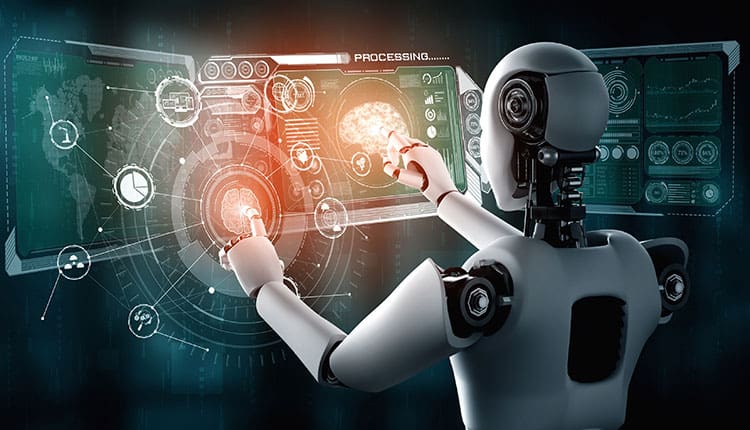By Piyush Mehta, CEO, Data Dynamics
AI-Human Symbiosis: A Shift Towards Augmented Intelligence
AI is evolving beyond mere automation and into a realm of symbiotic collaboration with humans, especially in data security. By 2025, organizations will need to shift their mindset from purely AI-driven solutions to AI-augmented intelligence, where human judgment remains essential. While AI handles scale and efficiency, human intervention will be indispensable for ethical oversight, bias mitigation, and sophisticated threat detection. Instead of viewing AI as a standalone solution, leading organizations will position it as an augmenting force for human decision-making in data governance and cybersecurity.
AI-driven data management solutions that incorporate human oversight in areas like data discovery, classification, and continuous security monitoring will be essential. This evolution will see a move away from manual governance to policy-driven frameworks and least privilege Role-Based Access Control (RBAC), ensuring both efficiency and robust security. This shift toward AI-human symbiosis will drive tools like Explainable AI (XAI) and Continuous Adversarial Resilience Testing (CART)—an advancement beyond traditional adversarial testing that continuously monitors AI decision paths for vulnerabilities. Those who blend these technologies with human intuition will create AI models that are both scalable and inherently secure.
Data Sovereignty 2.0: From Compliance to Competitive Differentiation
In 2025, data sovereignty will evolve from being a compliance requirement to a key driver of market differentiation. Governments worldwide are tightening regulations on data generated within their borders, but savvy businesses will recognize that compliance with localized data regulations can offer a competitive edge. Forward-thinking organizations will adopt “sovereignty-aware” architectures that not only meet regulatory standards but also capitalize on regional data ecosystems.
By embracing localized data processing, companies can turn compliance into an advantage, driving innovations such as data barter markets and sovereignty-specific data products. Data sovereignty isn’t merely a regulatory checkbox—it’s about Citizen Data Rights. With most consumer data being unstructured and often ignored, organizations can no longer afford complacency. Prioritizing unstructured data management will be crucial as personal information needs to be identified, cataloged, and protected at a granular level from inception through intelligent, policy-based automation. Meeting these needs requires policies that ensure physical data location compliance while maintaining nimbleness in the face of regulatory changes.
Privacy-Enhancing Computation (PEC): Enabling Secure Collaboration in a Data-Driven World
In 2025, Privacy-Enhancing Computation (PEC) will be essential for organizations aiming to maximize data value while safeguarding privacy. PEC techniques, such as homomorphic encryption, secure multi-party computation, and federated learning, allow organizations to analyze, share, and collaborate on sensitive data without exposing it. This approach supports secure data processing across distributed environments, paving the way for more innovative and collaborative use cases across industries like finance and healthcare.
PEC-based solutions will enable businesses to unlock the full potential of their data while remaining privacy-centric, supporting secure data exchanges and cross-organizational collaboration. As data sharing becomes central to business strategy, technologies that combine centralized governance with federated data management will enable secure, compliant data exchanges and analytics down to the data steward level, reducing the risk of privacy breaches while adhering to strict data privacy regulations.
Enterprise-wide Data Democratization and Privacy Awareness: The Foundation for Citizen Data Control
By 2025, data democratization will extend beyond organizations to empower consumers and employees alike, putting personalized data rights and shared responsibility for privacy at the forefront. Individuals are gaining more control over their personal information and expect transparency, control, and digital trust from organizations. As a result, businesses will shift to self-service data management, enabling data stewards across departments to actively participate in privacy practices. This evolution moves privacy management out of IT silos, embedding it into daily operations across the organization.
Organizations that embrace this change will implement a “Data Democracy by Design” approach, incorporating self-service privacy dashboards, personalized data management workflows, and Role-Based Access Control (RBAC) for data stewards. By decentralizing privacy management, they will foster a culture where every data steward contributes to governance, enhancing accountability and compliance across the board. This shift transforms privacy into a collaborative effort, blending consumer-centric data control with employee empowerment to build digital trust.
Data Mesh 2.0: Decentralization Meets Hyper-Scalability
As businesses grapple with vast volumes of unstructured data, traditional data lakes and warehouses will no longer suffice. Enter Data Mesh 2.0: a fully decentralized yet hyper-scalable architecture where domain-specific teams own and manage data products, supported by governance frameworks that ensure security and compliance. Unlike early versions, Data Mesh 2.0 will combine advanced automation with autonomous data governance. Gartner predicts that by 2025, around 70% of organizations will adopt decentralized architectures like data mesh to enhance scalability and self-service data access.
The emergence of programmable data mesh systems will enable dynamic governance at scale—where data products are automatically governed based on context, usage, and compliance requirements. This approach will allow organizations to manage vast, decentralized datasets while maintaining control through automation. Companies that embrace these systems will move beyond static, centralized governance models to achieve hyper-scalable and decentralized architectures, all without sacrificing control.



